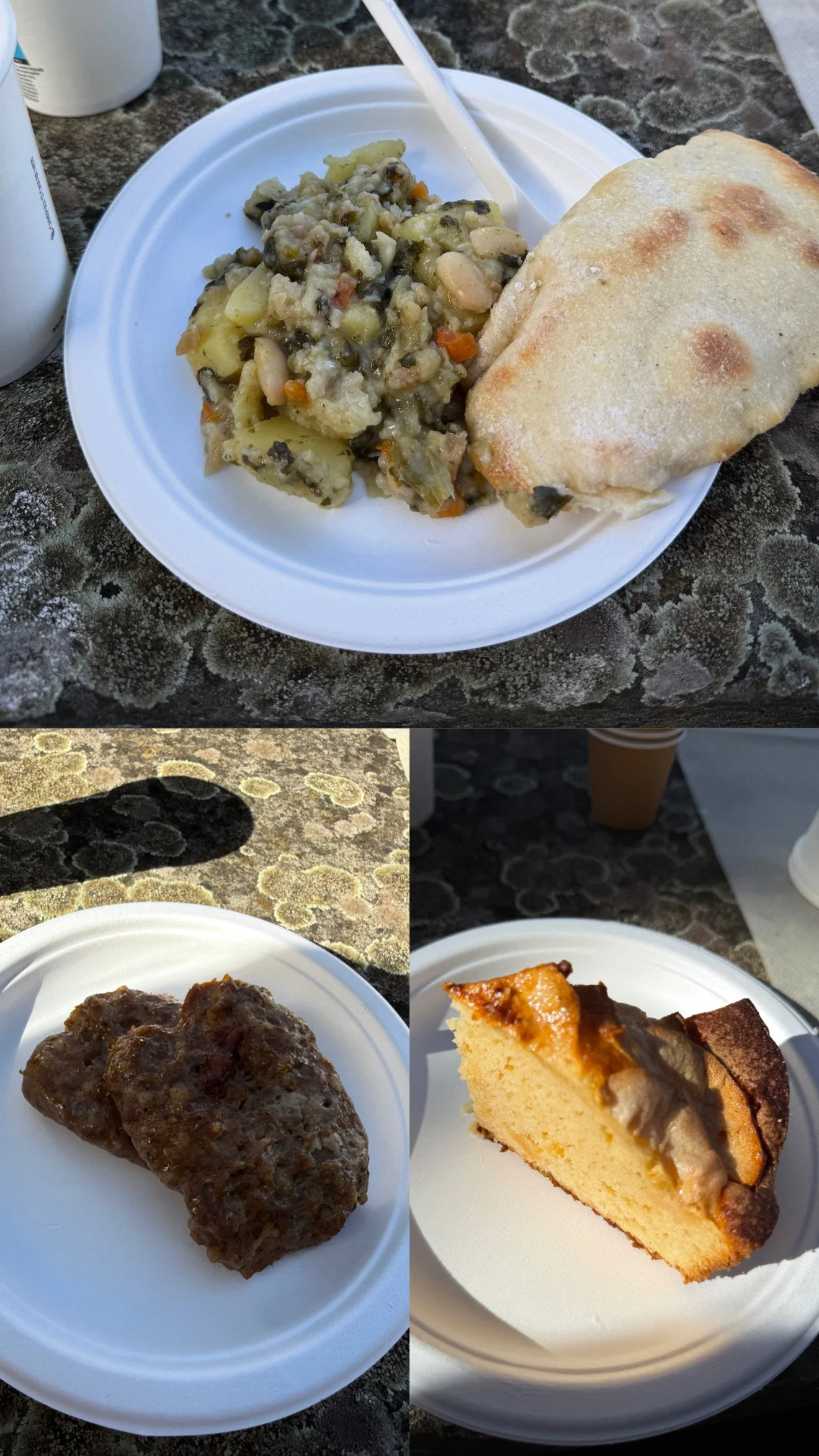Harvesting Tradition: A Day Among the Olives at Villa La Pietra
By Chloe Chan (11/23/25) — Florence, IT
Every Sunday, the Florence Flyer would be sent to my email inbox at 6:00 pm. One week, I saw an Olive Harvest event that I immediately signed up to volunteer for at Villa La Pietra – a property dating back to the 1460s and now owned by New York University. I signed up thinking it would be a nice break and maybe I’d get some fresh air from it, but it turned out to be something way more meaningful than that.
Learning to Rake
Villa La Pietra
There were about twenty of us that morning, all gathered under massive olive trees spread across the 37 acres of gardens at the Villa La Pietra estate. The estate looks exactly like a classic Tuscan landscape, with long rows of olive trees, neatly kept gardens, and historic villas. The villa serves as a rich resource for ongoing research in art history, conservation, and Italian history.
Nicholas Dakin-Elliot, who runs the harvest program, gave us a bit of background on Tuscan olive oil. Villa La Pietra is actually award-winning and among the best. "You have to get the timing right," he said. "Harvest too early and the oil tastes bland. Wait too long and the olives fall before you can collect them." The best time to harvest olives is in October and November.
He explained that the team monitors the olives closely each season, watching for the exact moment when they’re ripe but not overripe, so that none of the fruit goes to waste – a big part of keeping the estate’s production sustainable.
He then took us to the trees that we’d actually be working on. He says his obsession with olive oil comes from the way it's handled, which really represents Italy. He showed us how to collect the olives by hand properly, which helps protect the trees and maintain the natural landscape, using methods such as raking for higher olives and catching them in nets spread beneath the trees. He made it look so easy, and once I began, I also started to get the hang of it.
Tuscan Bread Soup, Sausages, and Apple Cake
The Best Part: Lunch in the Groves
After a few hours of harvest work, we were all pretty hungry. The villa staff had set up this incredible spread of traditional Tuscan food, and we ate family-style, passing around dishes and chatting with each other at a fireside table.
Then came the oil tasting. I’ve had olive oil before, obviously, but I’d never really tasted it. Nicholas walked us through three different olive oils and helped us try to distinguish different flavors and qualities. And yes, they actually did taste different – some were stronger, some fruitier, and some way more bitter. Though I wouldn’t drink olive oil on its own again, it was fun even if the taste of the olive oils just coated my mouth with a bit of bitterness.
Worth the Sore Arms
By the time I was done, my arms were sore and my clothes were dirty, but I didn’t mind because it was one of the best days I’ve had in Florence. They also told us that participants would receive a bottle of the highly prized NYU Florence olive oil, and I can’t wait to bring it back home. Since the oil is produced in limited quantities, most of it goes to donors, volunteers, and the NYU community, supporting the villa’s cultural and educational mission. It’s also made using fully organic and sustainable methods, which is why the flavor is so pure and why the estate produces only small batches rather than mass production.
Caption: VLP Olive Oil label 2024
What made this experience even more meaningful was the connection to my Marketing course. We’ve been working on a semester-long project designing labels for these very bottles for the next year – the “liquid gold” that students and staff use to drizzle over their foods in the cafeteria. I got to see the full production process firsthand, from the sustainable, traditional agricultural practices, all the way to the bottle, which really brought our project to life.
I left the gardens with a deeper appreciation for the work that goes into something as simple as olive oil and gained insight into the cultural importance of olive trees in Tuscany.





